How Eating Fewer Sugary Foods May Protect You From COVID-19
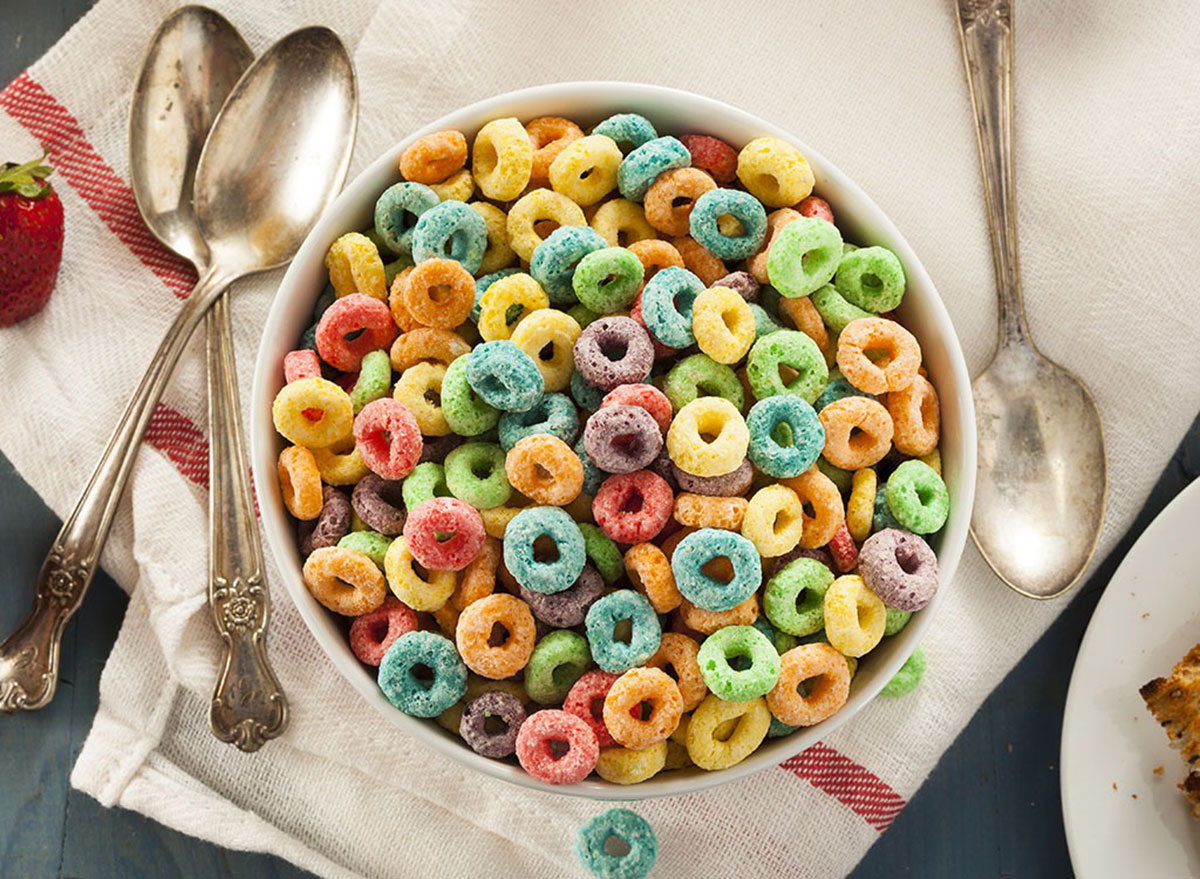
While everyone is spending most of their time at home, there’s a good chance you’re more inclined to snack on something sweet. Hey, nothing says comfort like a cookie, a bowl of cereal, or a scoop of ice cream, all of which happen to be treats that are packed with sugar. And during this time when you’re not able to get to your local gym and making healthier eating choices isn’t as easy, perhaps lowering your sugar intake isn’t that bad of an idea? According to one expert, eating fewer sugary foods might just help you out in the chance you contract COVID-19.
See, lowering your blood sugar through diet and exercise may be protective against COVID-19, suggests Adam M. Brufsky, MD, PhD, a breast cancer expert, and professor of medicine at the University of Pittsburgh School of Medicine. “Sugar is not only something that sweetens our food. It is also something that is an essential part of the proteins that make up our bodies,” he said in the academic news journal The Conversation. That led him to believe that better control of blood sugar by diet and exercise, as well as better control of blood glucose in diabetics, especially when ill with COVID-19, “may possibly help control the severity of the disease and even its spread.”
Other researchers believe high blood sugar and type 2 diabetes are risk factors for those who catch coronavirus. Scientists from Germany, the United Kingdom, Switzerland, Italy, and Singapore recently concluded in Nature Reviews Endocrinology that controlling high blood sugar, lipid levels, and blood pressure may potentially prevent or lessen the severity of the side effects of the coronavirus. According to the Centers for Disease Control and Prevention, patients with type 2 diabetes and metabolic syndrome (a cluster of conditions including high blood sugar, high blood pressure, high cholesterol, and excess abdominal fat) may be up to 10 times more likely to die when they contract COVID-19 compared to people without a metabolic disease.
How can you lower your risk?
If you are one of the 88 million Americans with high blood sugar, the coronavirus epidemic makes it more imperative than ever to take a hard look at your diet and make sure you’re doing all you can to avoid developing type 2 diabetes as well. Two of the best ways to dramatically reduce your risk are by eliminating hidden added sugars from your diet and by losing weight—and it doesn’t have to be all that much weight, either. And eliminating the sources of hidden added sugars in your daily diet can quickly help you drop those pounds!
So we rounded up a list of the most common foods that pack the lion’s share of carbohydrates and added sugars—some containing 20 grams or more—so you know what to avoid eating.
Applesauce
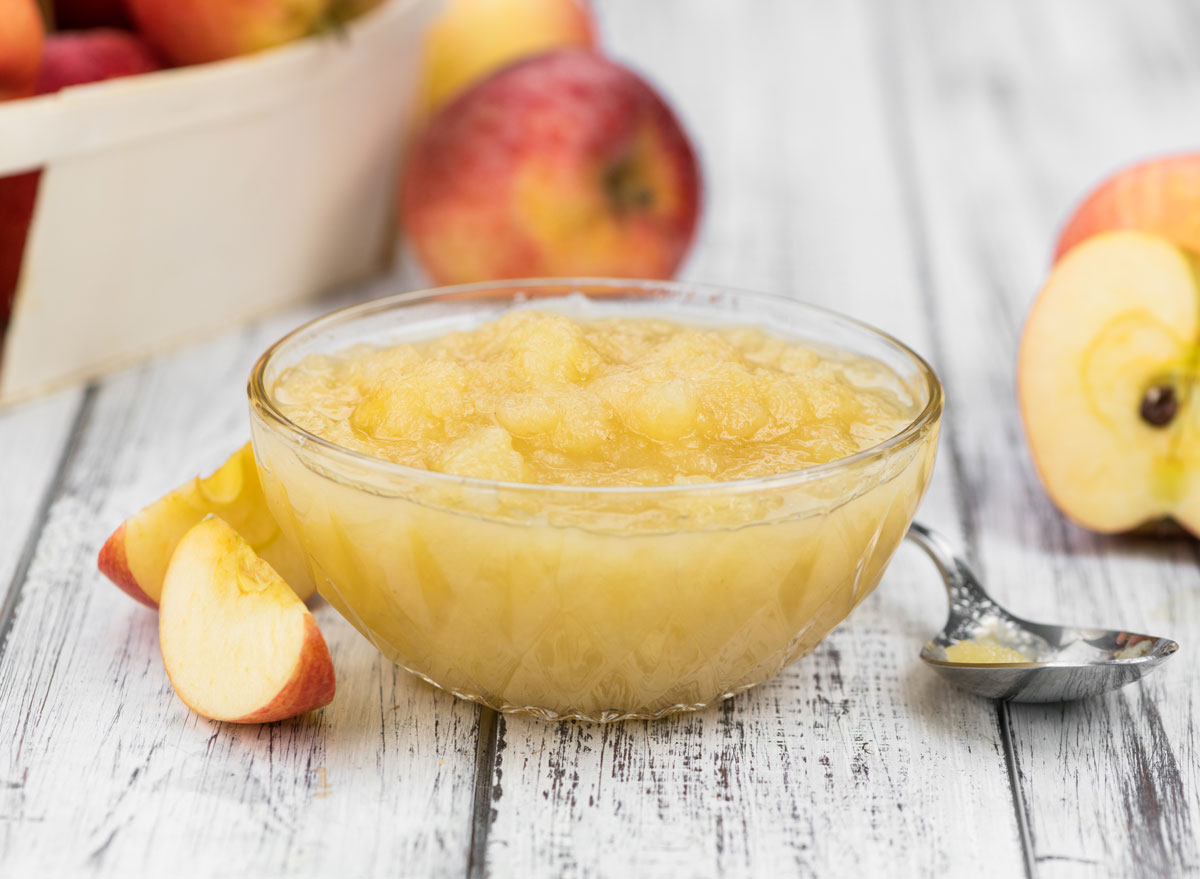
Remember that no one ever said, “an applesauce a day keeps the doctor away.” You’re better off eating an apple than going for the pureed version. One cup of sweetened applesauce contains 36 grams of sugar but only 3 grams of fiber. A medium-sized apple, on the other hand, has 4 grams of fiber and, although still sweet, only has 19 grams of sugar, and apples are rich in cancer-fighting antioxidants. And apples are one of the best fruits for weight loss, approved by a nutritionist, too!
Bananas
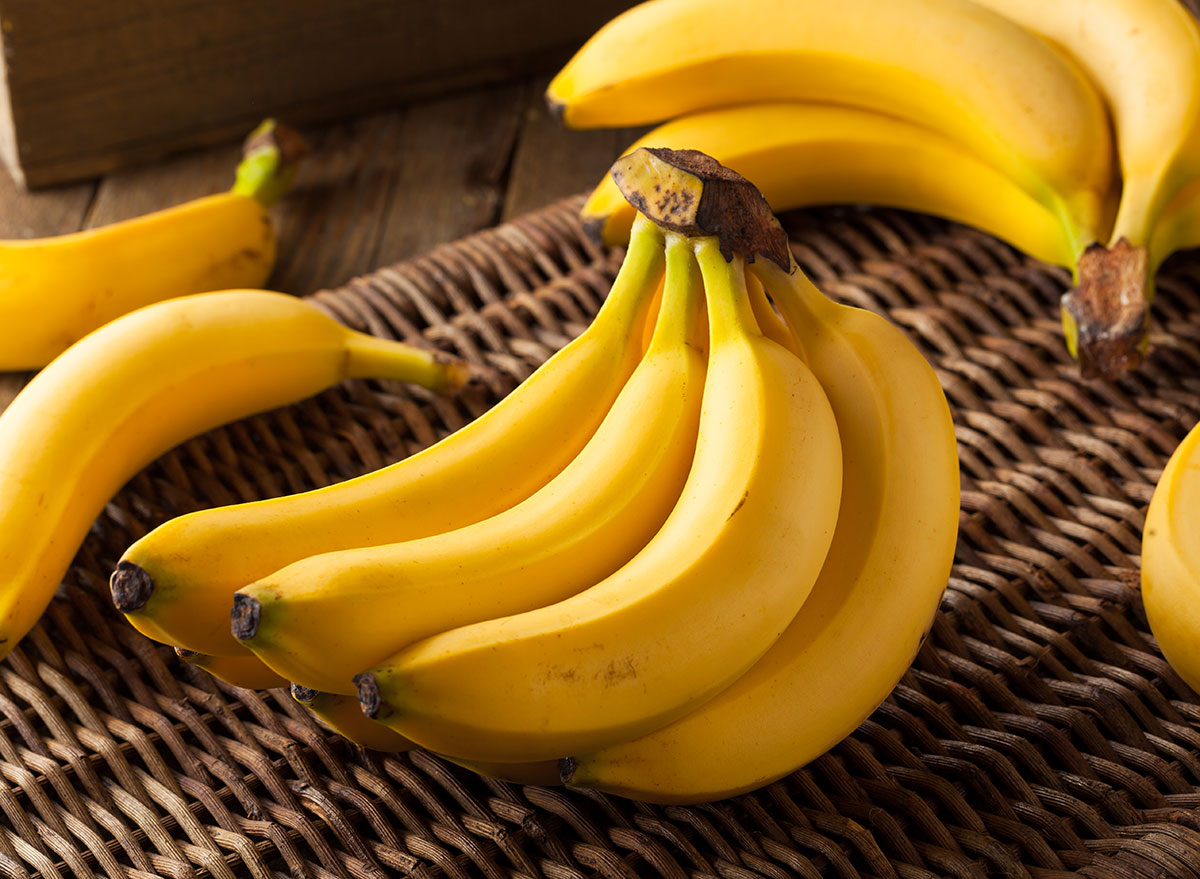
Bananas are a good source of magnesium, a nutrient that aids protein synthesis, which, in turn, increases lean muscle mass. Magnesium also helps boost lipolysis, the process by which the body releases fat from its stores. And, of course, it’s one of the best sources of potassium, which lowers blood pressure. Bananas are good for you, but they are high in carbs at 31 grams per large fruit. So have a banana, but not a whole bunch at one time!
Barbecue Sauce
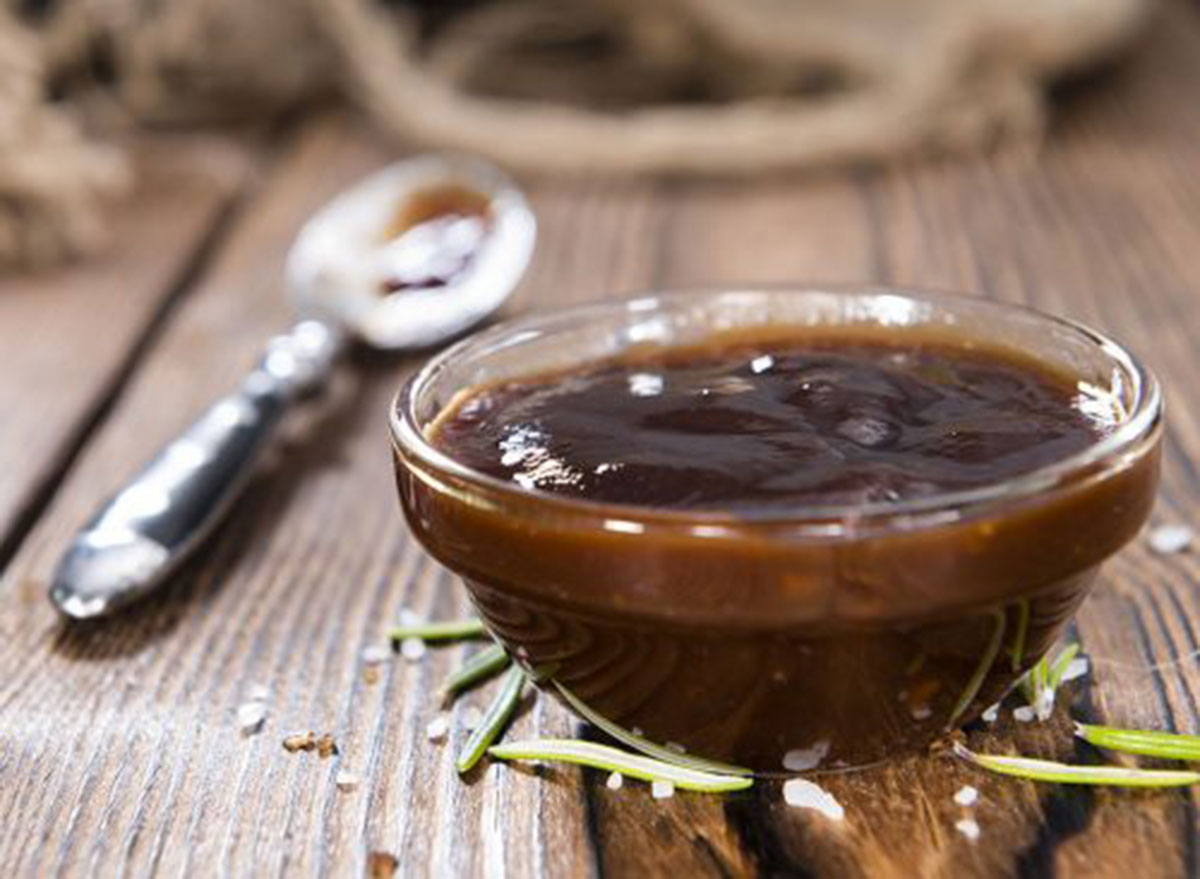
Condiments can be tricky and measuring out portion size isn’t always an option. The next time you order ribs, keep in mind that just two tablespoons of barbecue sauce can contain upward of 11 grams of sugar. In a restaurant or takeout order, you can expect that more than four tablespoons are slathered onto a serving of ribs.
Candy
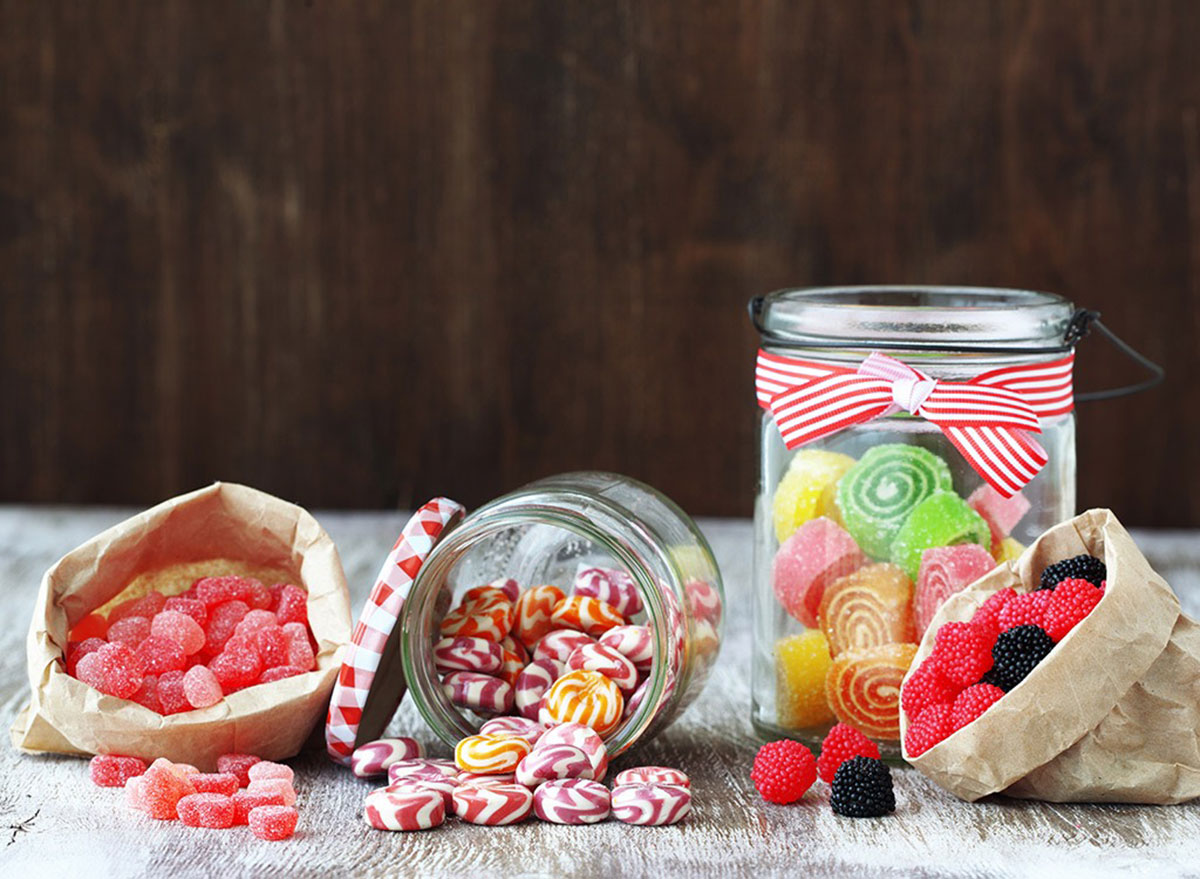
Many people think of fruity, fat-free candies like Twizzlers, Sour Patch Kids, and gummy bears as better-for-you candies, but the truth is they’re just as packed with carbs and sugar as their chocolate counterparts—and in some cases, they actually carry more carbs. For example, a pack of M&M’s carries 35 grams of carbs, while an 8 oz packet of Sour Patch Kids is packed with 216 grams. If you’re looking for a lower-carb sweet, grab a few grapes, or raspberries. Try them frozen!
Canned Fruit Cocktail
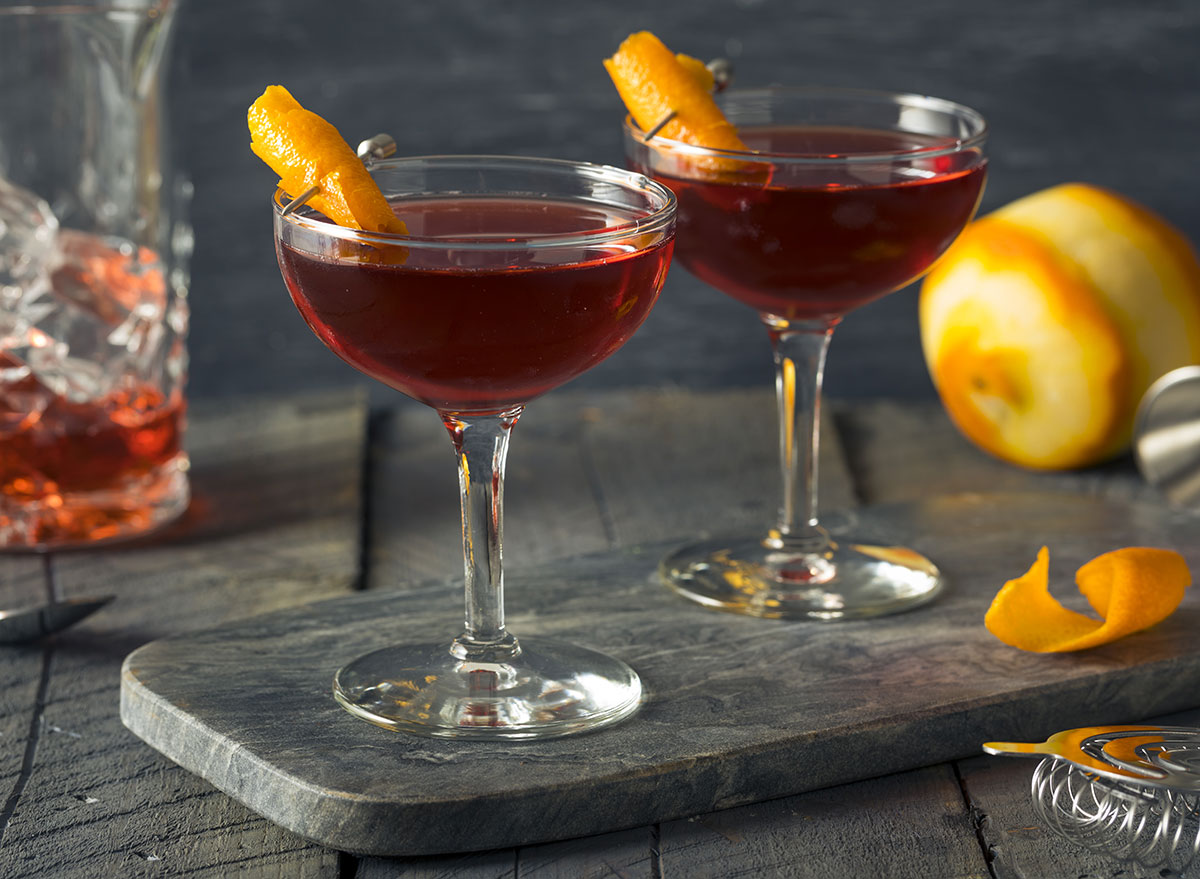
Fresh fruit has natural sugars from fructose, so they are most beneficial when you need an extra energy burst. However, there’s no good time to eat canned fruits, which are often packed in high fructose corn syrup. A one-cup serving of canned peaches, for example, can contain upward of 39 grams of sugar. If you need your fruit to last longer, head to the freezer aisle and reach for no-sugar-added varieties that were flash-frozen at the peak of their ripeness. Here are the 15 Best Frozen Fruits & Vegetables to Keep on Hand!
Canned Soup
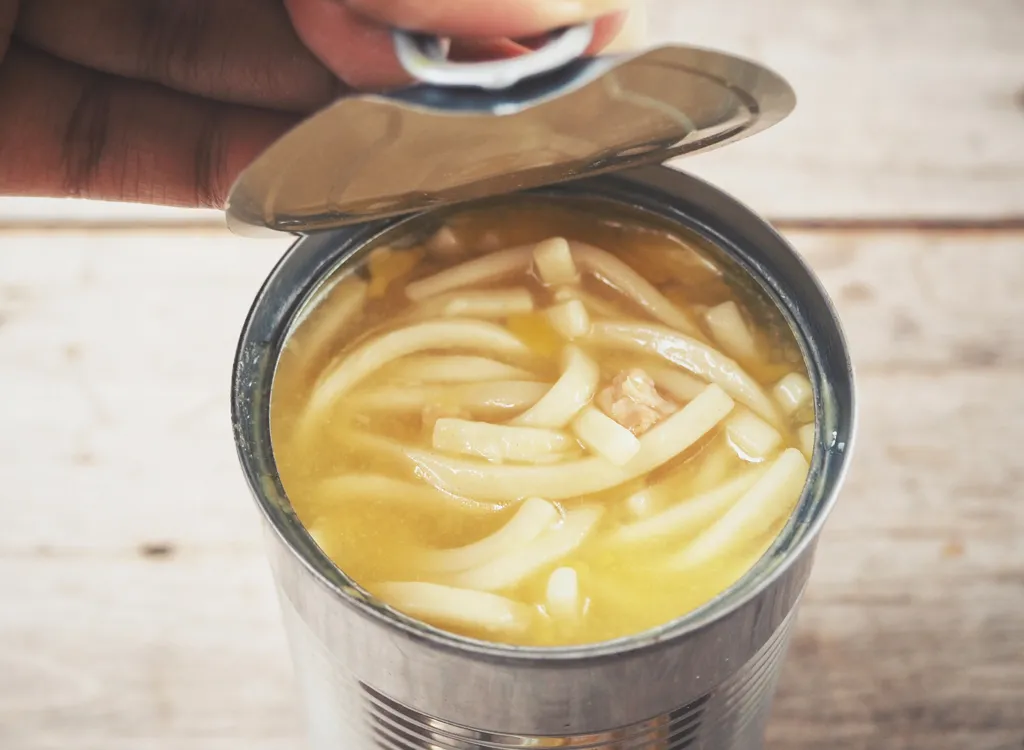
You probably know to be wary of sodium in canned soup, but you may not know that many varieties are riddled with sugar, too. Campbell’s Slow Kettle Style Tomato & Sweet Basil Bisque, for example, has 25 grams of added sugar per cup! That’s a lot of sweetness to dunk your grilled cheese in.
Chocolate Milk
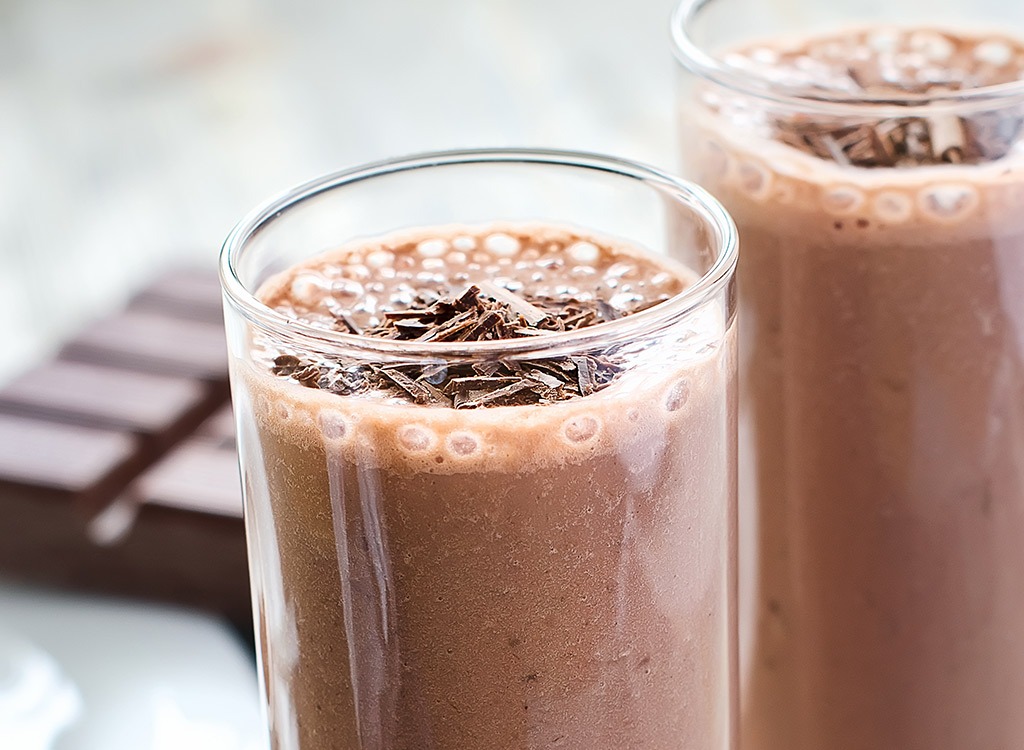
While its high carbohydrate and protein content often inspires personal trainers to call chocolate milk the perfect recovery drink, it’s still high in sugar. “Dairy contributes naturally occurring lactose, but many brands add sweeteners along with the chocolate flavor,” says Cara Harbstreet, MS, RD, of Street Smart Nutrition. “Unless you’re highly active or engaging in intense exercise, those added calories might not provide many benefits.” For daily sipping, reach for a glass of plain low-fat or whole milk and pair it with a small piece of dark chocolate to satisfy your sweet tooth. And be sure you’re avoiding any of these 50 Drinks With More Sugar Than a Hershey’s Bar.
Cranberry Sauce
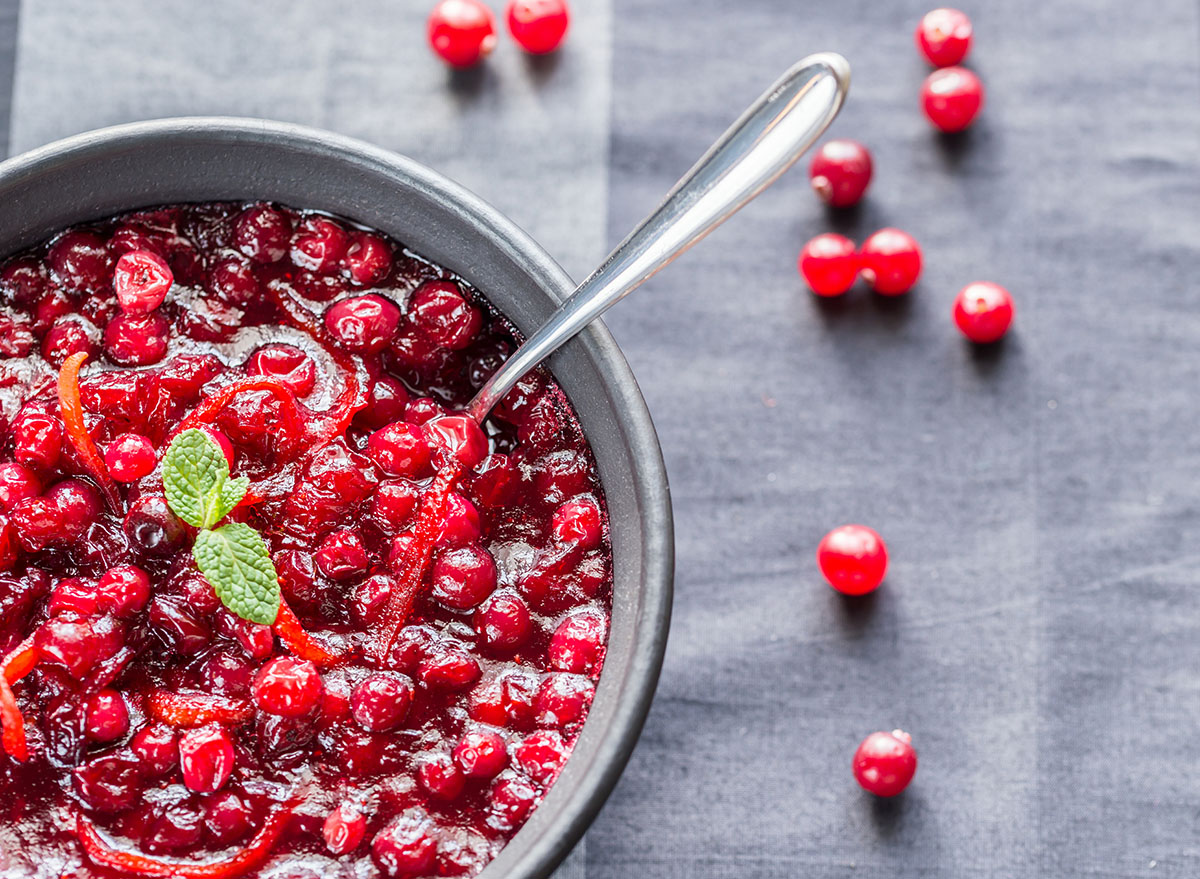
Come Thanksgiving Day, let’s all promise to do without this wobbly, gelatinous, too-sweet sauce. A half-cup serving contains 56 grams of carbohydrates and 48 grams of sugars. Turkey Day wouldn’t be the same, you say? Try just taking a tablespoon only!
Energy Bars
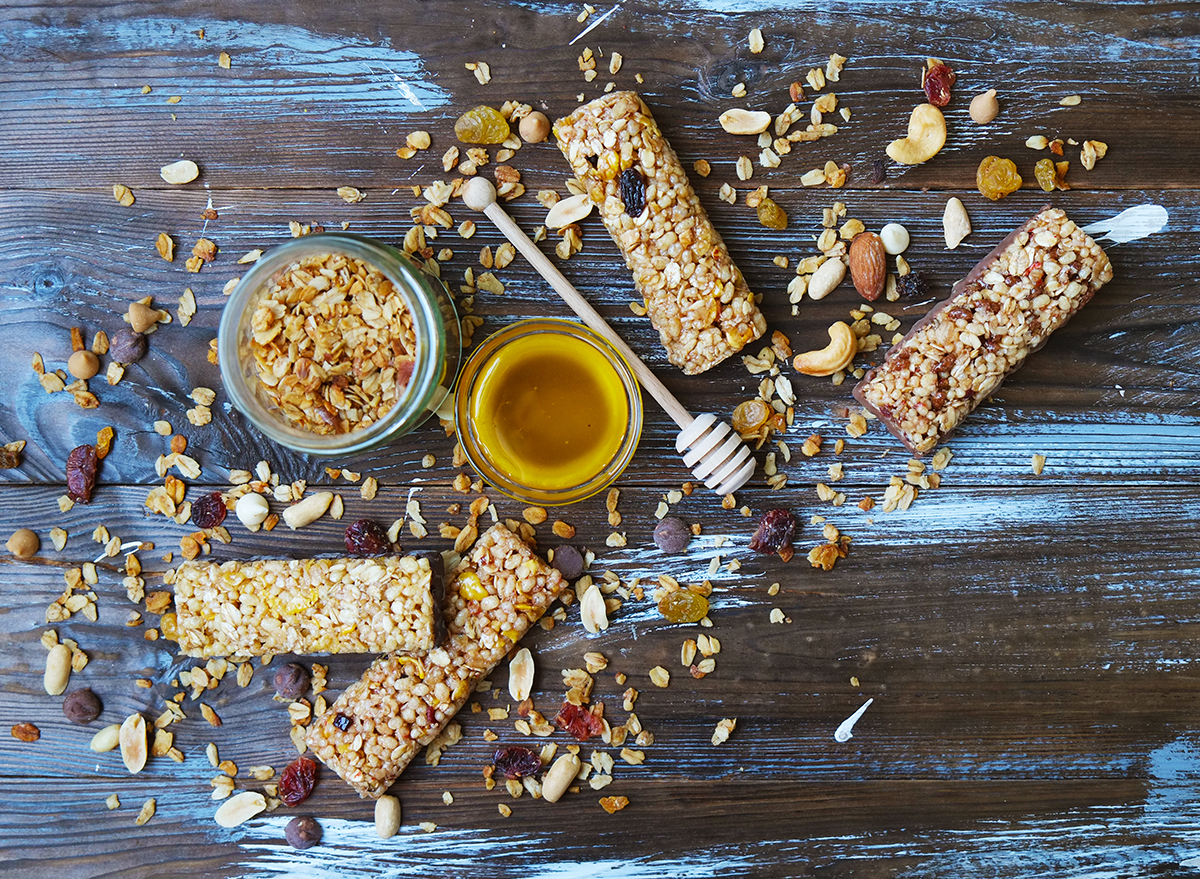
Since carbs provide energy, it should come as no surprise that energy bars are loaded with carbohydrates. Still, a lot of people think these health-food imposters are actually good for you. Not so. On average, they contain up to 45 grams of carbohydrates—and are full of sugar and scary chemicals, too. They’re basically a triple threat to your health.
Looking for healthy recipes you can try out at home? Be sure to sign up for our newsletter to get daily recipes and food news in your inbox!
Energy Drinks
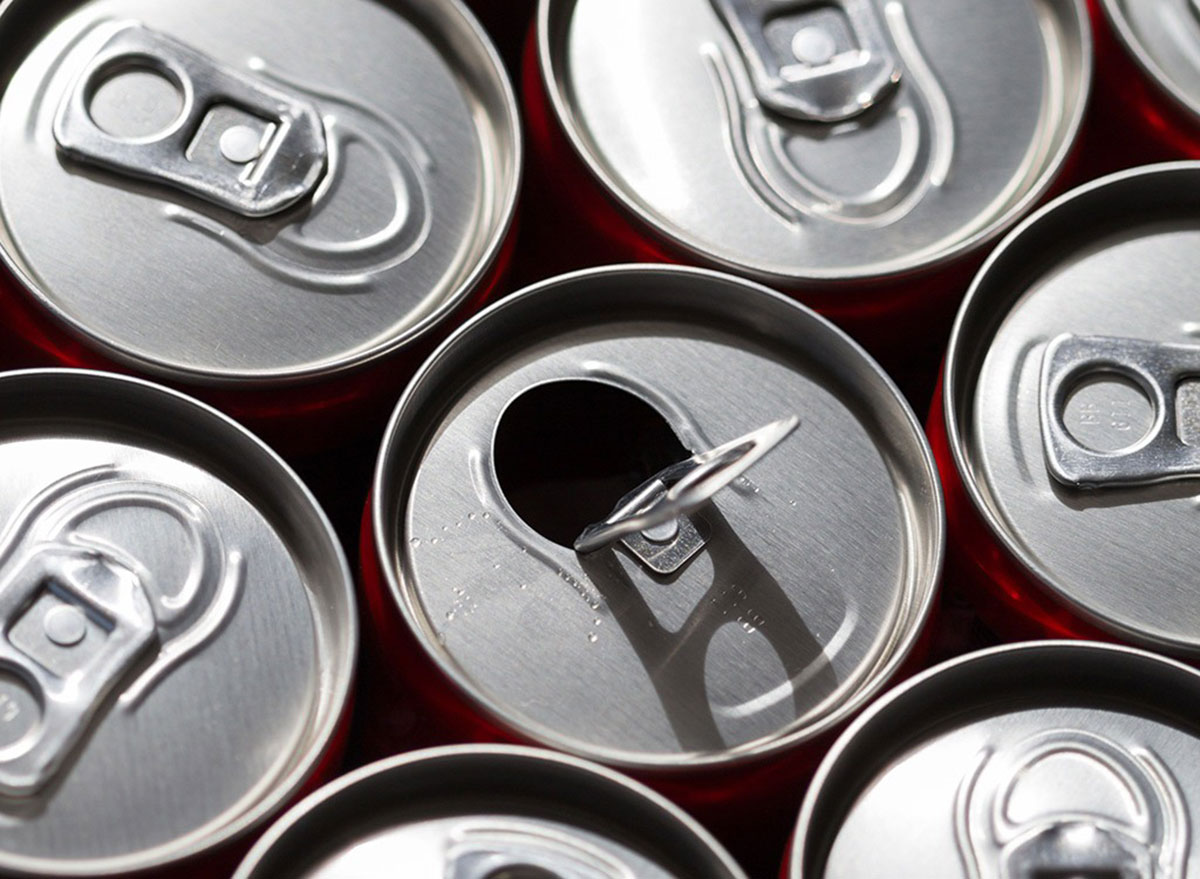
Most of these so-called performance drinks are loaded with sugar and caffeine. Example: One can of Red Bull contains 27 grams of sugar. No thanks!
Flavored Kefir
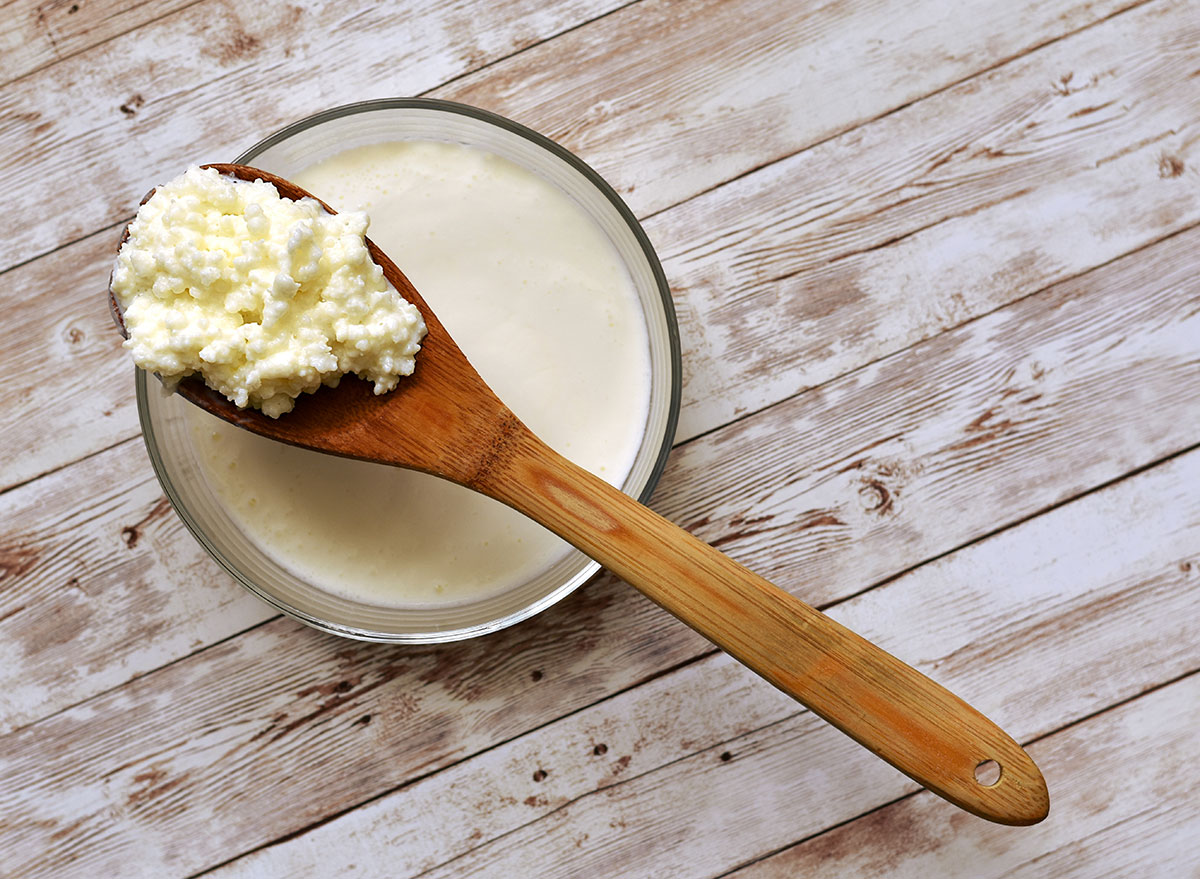
Drinking kefir is a good way to boost good-for-you gut bacteria. But stick to the unflavored kind as the fruity flavors are—you guessed it—very, very sweet. Some contain up to 22 grams of sugar per serving! And unsweetened kefir contains fewer than half of those sugar grams.
Flavored Teas
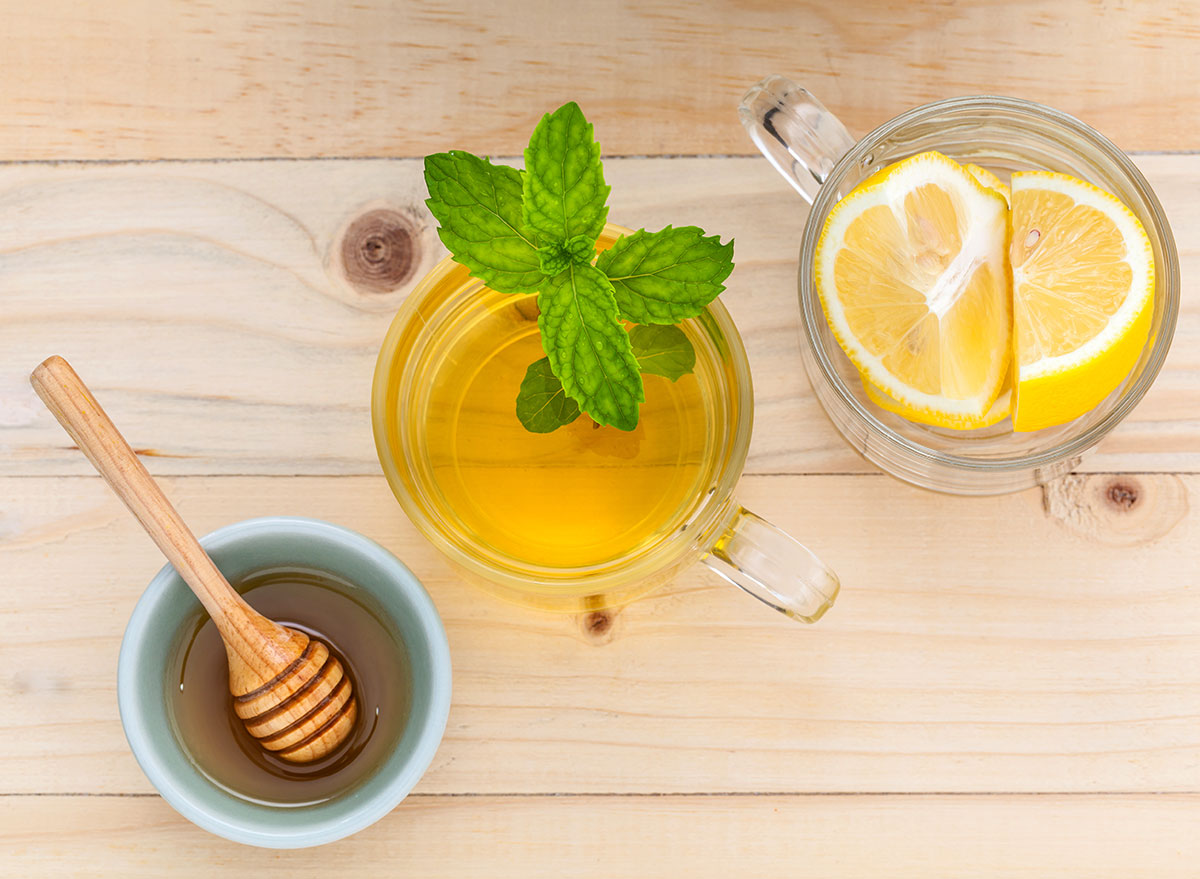
Sweet tea and other high-sugar flavored teas in a bottle are not better for you than soda just because they have “tea” in their names. Many of them contain nearly 46 grams of sugar per bottle!
Flavored Iced Coffees
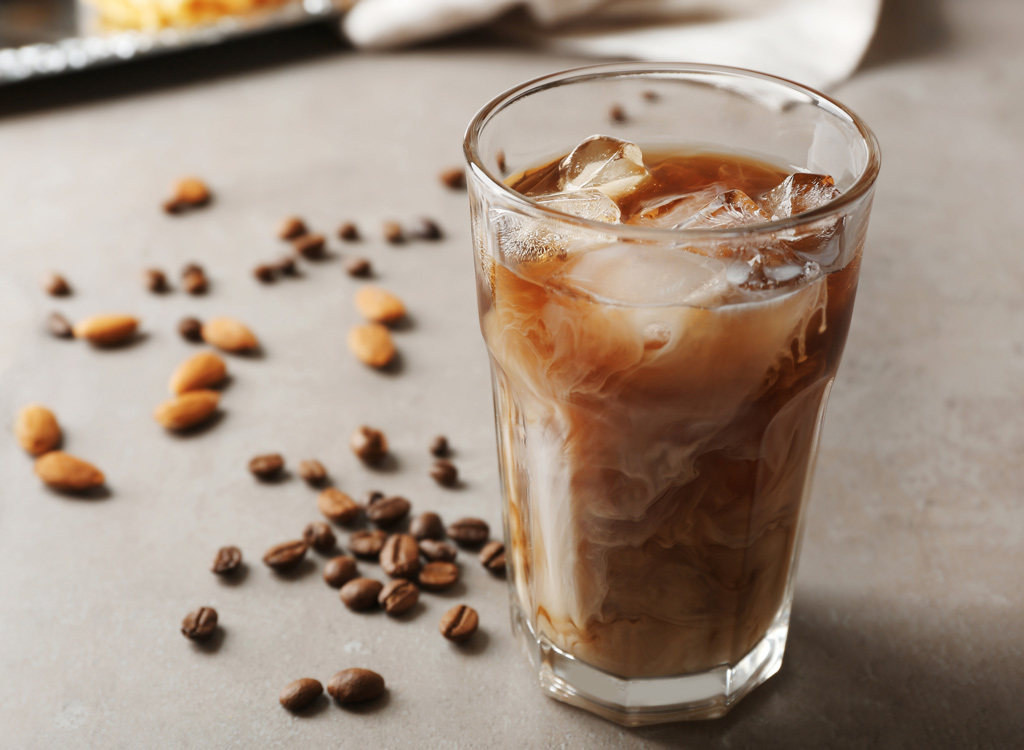
These can pass as liquid candy, too. A bottle of Starbucks Mocha Frappuccino contains 37 grams of carbs and 31 grams of sugar, delivering 200 calories per serving.
French Fries
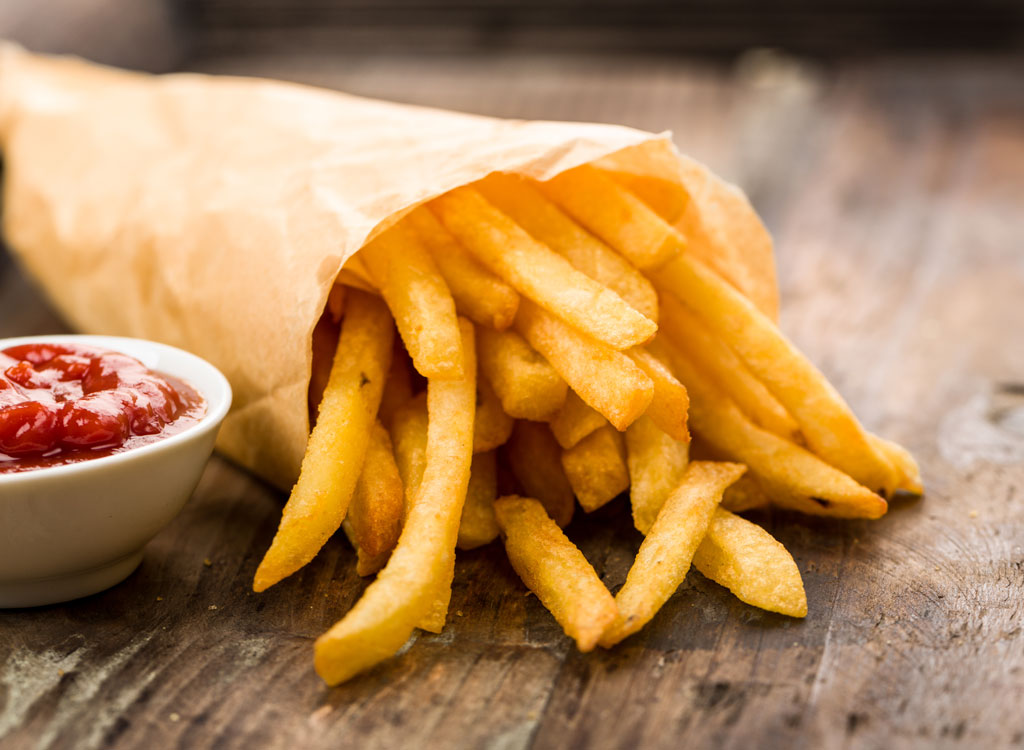
While most people know that potatoes are starchy, French fries are extremely carb-laden at 63 grams per restaurant serving. This is twice as many carbs as a bowl of pasta in a standard family-style serving! And it gets worse: Vegetable-oil-fried foods like fries contain high levels of something called inflammatory advanced glycation end products (AGEs), which are inflammation-causing compounds that form when certain foods are cooked at high temperatures.
Fresh-Pressed Juices
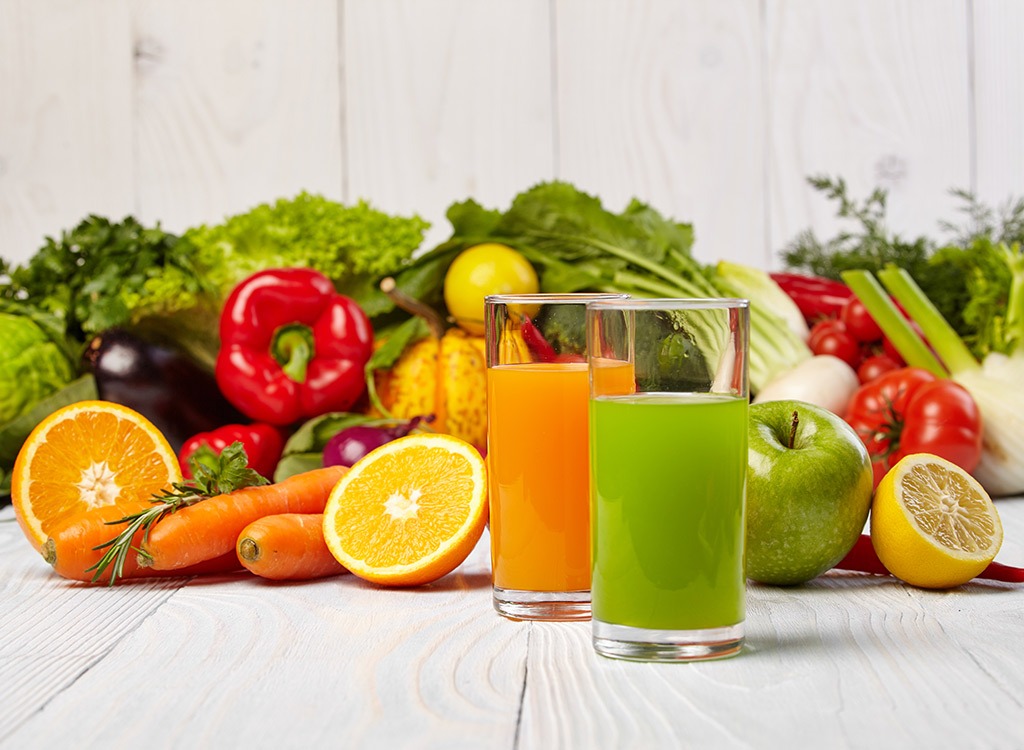
Organic, fresh-pressed juices might sound innocent, but don’t depend on them for health benefits. Guzzle down just one glass, and you’ll be drinking a sugar bomb with as many as 26 grams. And though you are getting the juice of whole fruit, you’re not getting the fiber of the whole fruit. Without the fiber from the plant, the juice isn’t much better than drinking a cup of sugar water.
“Healthy” Frozen Dinners
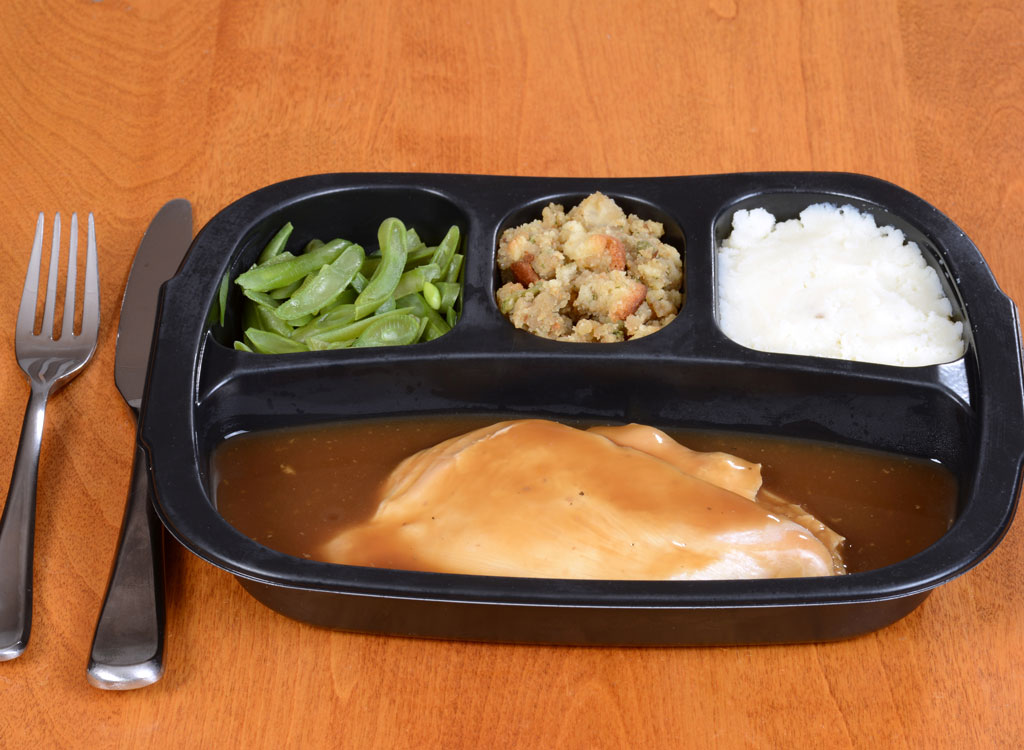
When you’re in a pinch, reaching for a frozen meal might not sound like a bad option—especially when that meal is labeled “healthy.” Still, pay attention to nutrition labels. Healthy Choice’s Cafe Steamers Pineapple Chicken, for example, touts grilled white meat and protein-rich edamame among its ingredients but has a whopping 15 grams of sugar in one bowl, 16 grams of protein, and 45 grams of carbs.
Low-Fat Yogurt
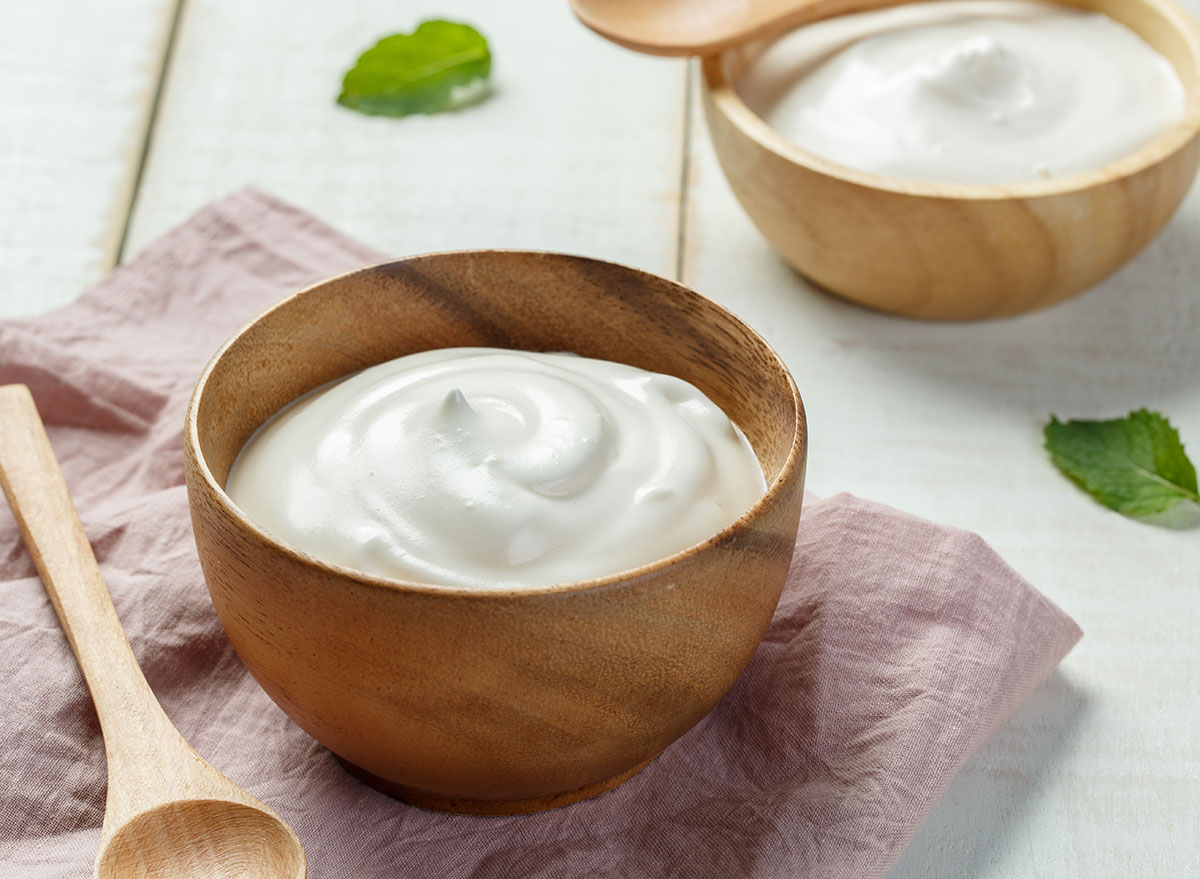
It should come as no secret by now that low-fat yogurts are exceptionally high in sugar. You might expect fruit-filled yogurt to be high in sugar—like Dannon’s Fruit-on-the-Bottom Blueberry, which contains 21 grams—but “healthy” yogurts are packing the sweet stuff, too. Instead, opt for plain Greek yogurt and add your own berries.
Maple Syrup
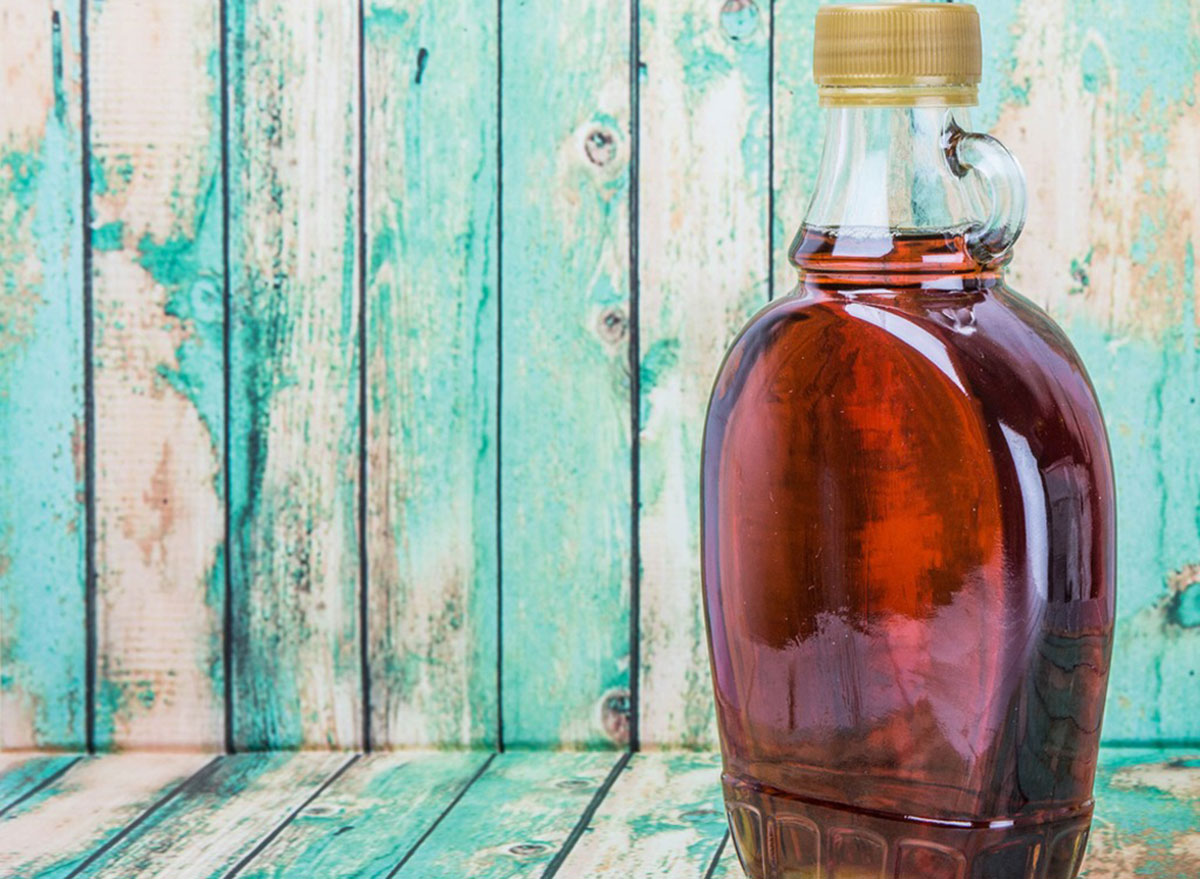
You know that maple syrup is packed with sugar, but who’d have thought that going organic could be even worse than the gross, fake kind. Madhava Organic Maple Agave Pancake Syrup delivers 30 grams of sugar in just two tablespoons. The only upside? The flavor of organic syrups is stronger and more concentrated than the high-fructose-made syrups, so you don’t need to use it as much.
Margarita Frozen Cocktail
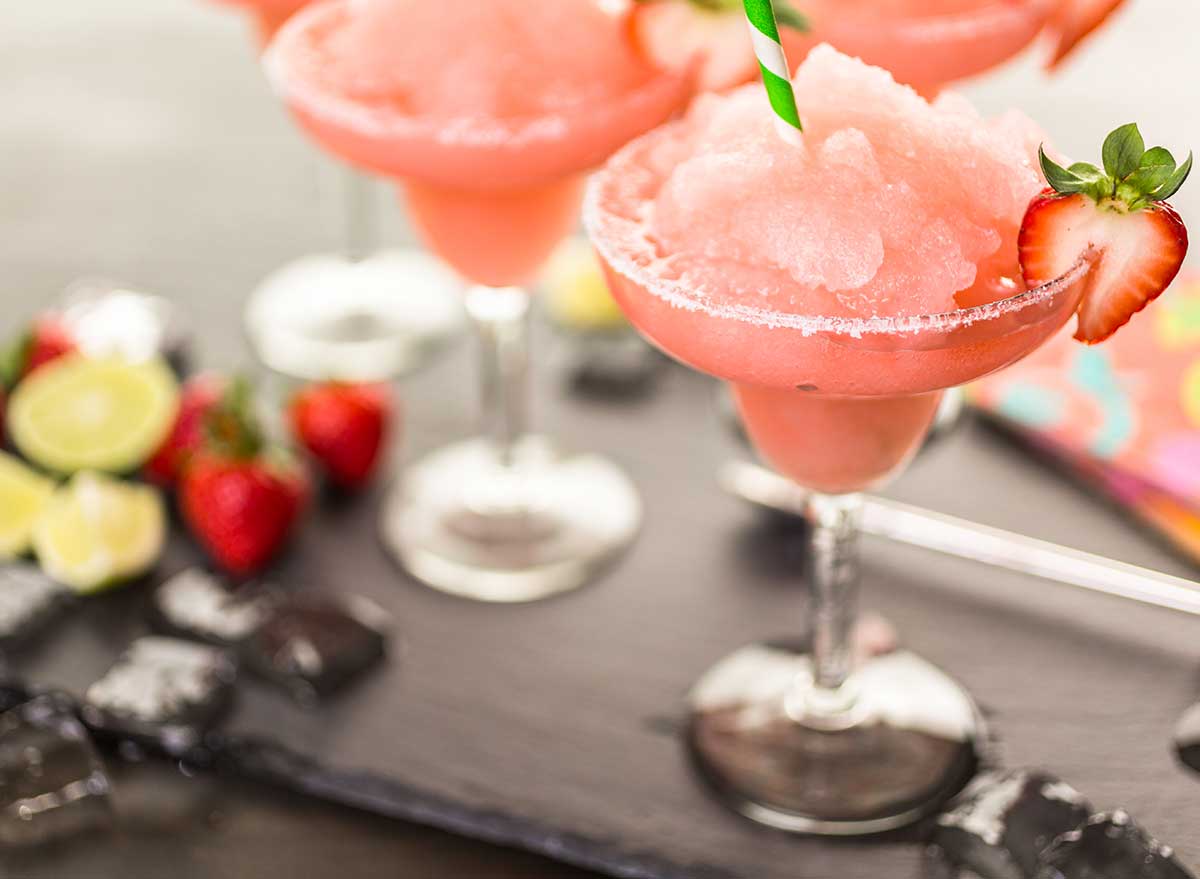
While whipping up a frozen margarita at home isn’t quite as bad as getting it from a bar (400 calories vs. 700), it’s still the worst cocktail for your waistline. Made with a sugar-spiked neon mix and tequila, it will overload your system with way too much sugar. Instead, Switch to a glass of sparkling wine with muddled strawberries and lemon slices to get your fruity fix for a fraction of the waist-widening sugar grams and calories. Why not try out any of these immune-boosting cocktails that pack vitamins and antioxidants?!
Muffins
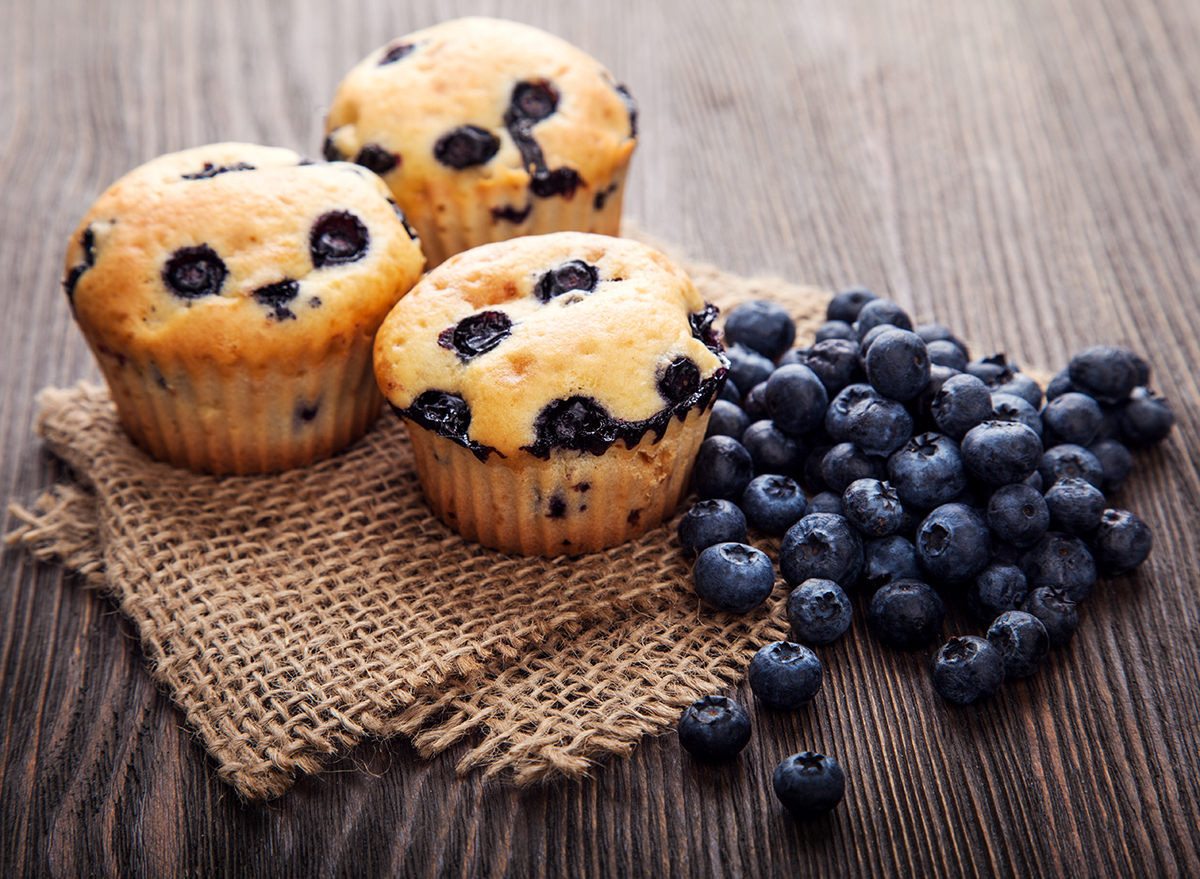
Just one commercially prepared blueberry muffin has as many carbs as not one, not two, but five slices of bread! It’s also a fat and calorie mine, carrying over 520 calories and a third of the day’s fat in one pastry. And eating half now and “saving the rest for later” is nearly impossible sometimes, as foods rich in carbs, fat, and sugar are downright addicting. Don’t think you can fix the problem by ordering a bran muffin either—the minimal fiber inside is no match for the sugar crush.
Pizza
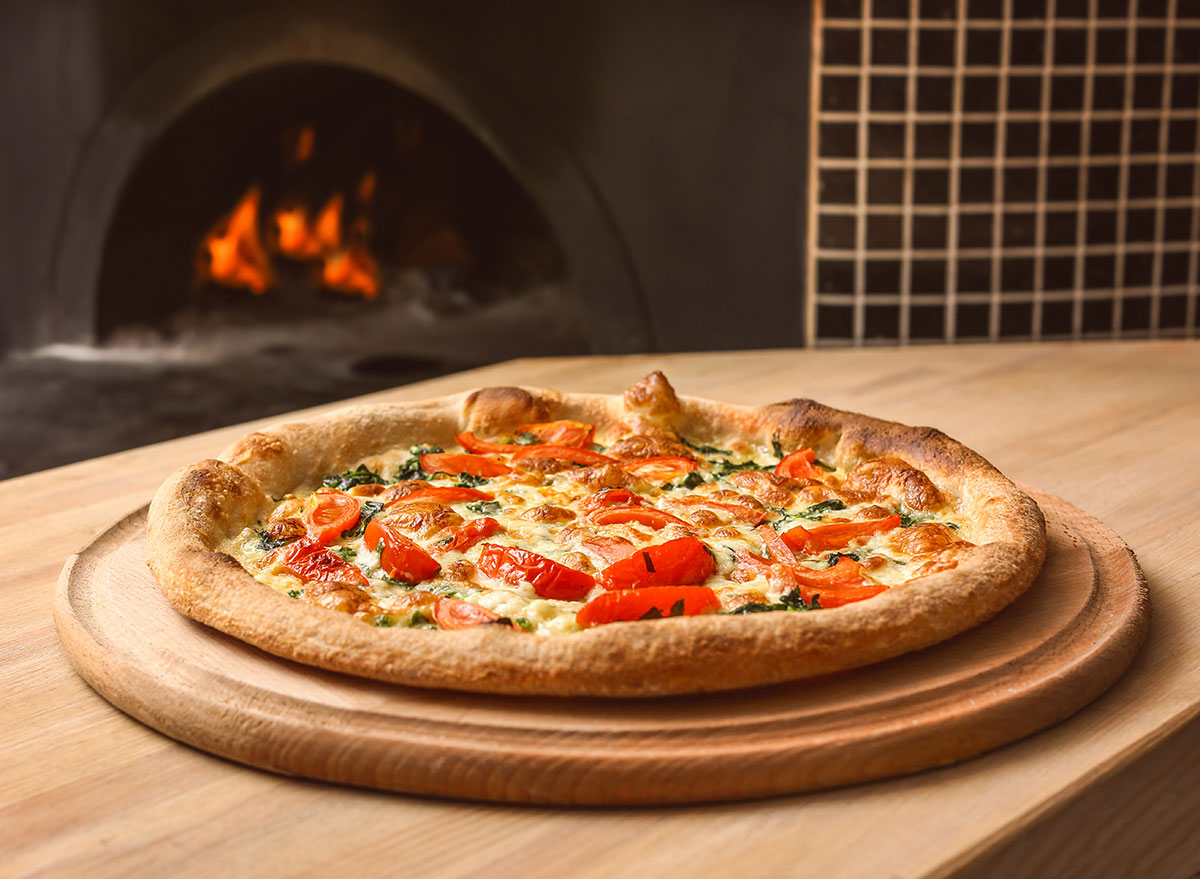
If you can’t live without pizza, hey, we understand, but you’ll want to make smart choices. If you really enjoy pizza, at least top your slice with lots of vegetables to boost the fiber profile. At 36 grams of carbohydrates, each slice is like eating a bowl of penne pasta.
Fat-Free Salad Dressing
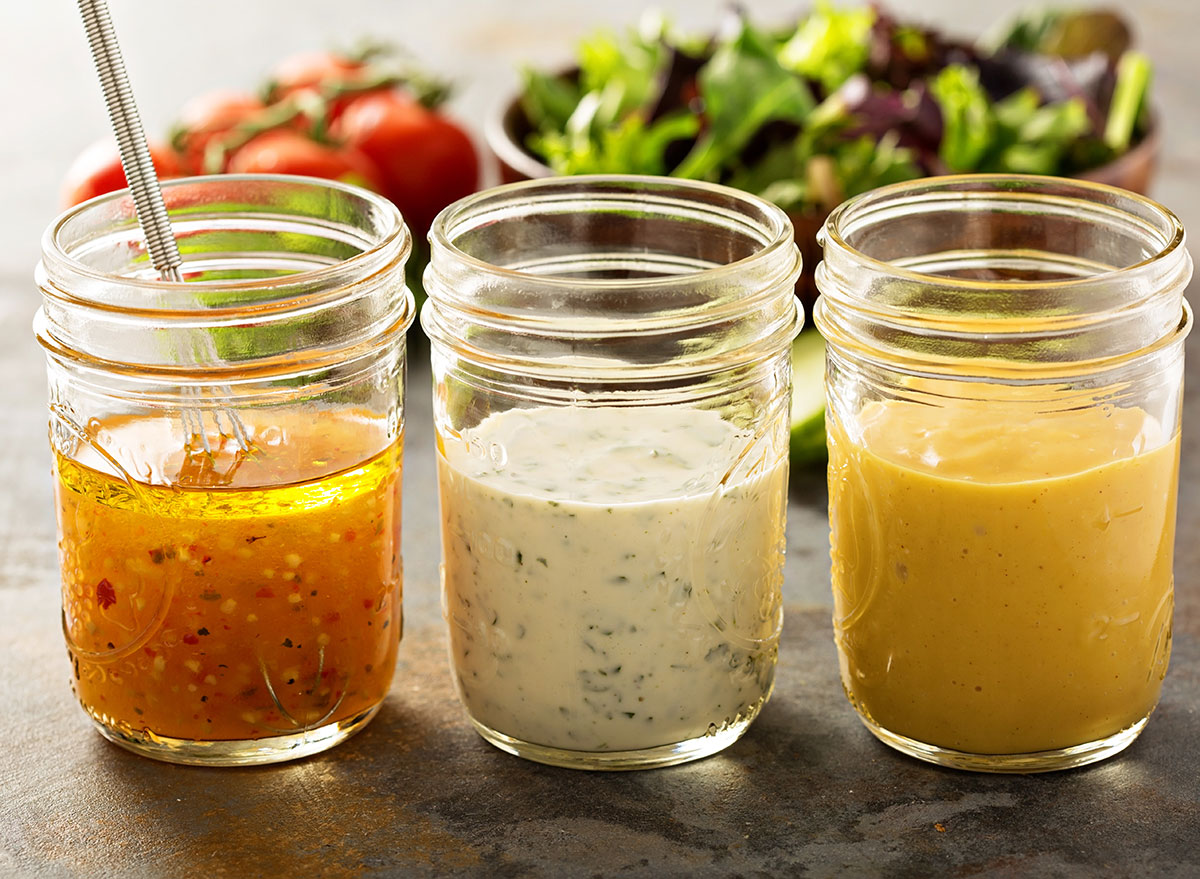
Products that boast the claims “low-fat” or “fat-free” are usually code for “high in sugar.” When manufacturers take the fat out of food, they make up for the lost flavor with extra salt and sugar.
White Bread
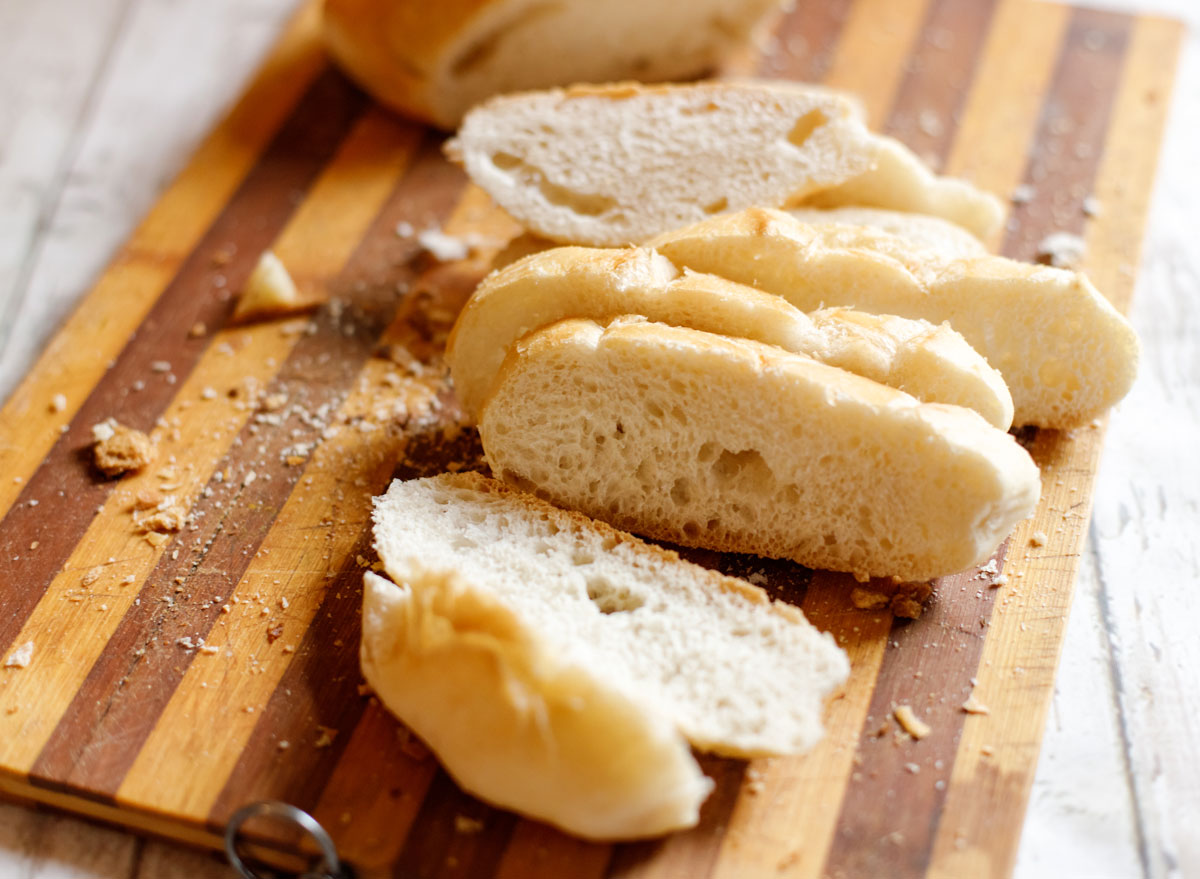
Packaged white bread can have 4 grams of sugar per slice. That means you’d be eating 8 grams of sugar per sandwich. To make things worse, it is often sweetened with high fructose corn syrup, one of the most flat-belly-threatening forms of sugar on the market. And wraps are just as bad, as they can have about the same number of carbs as two slices of white bread. Instead, go with Ezekiel’s sugar-free, sprouted grain loaf. The millet, spelt, lentils, and cholesterol-lowering barley lend a natural sweetness and help boost the loaf’s fiber, a nutrient that wards off hunger. Plus, sprouting grains break down enzyme inhibitors, which helps your body better digest and absorb healthy nutrients from the bread.
Smoothies
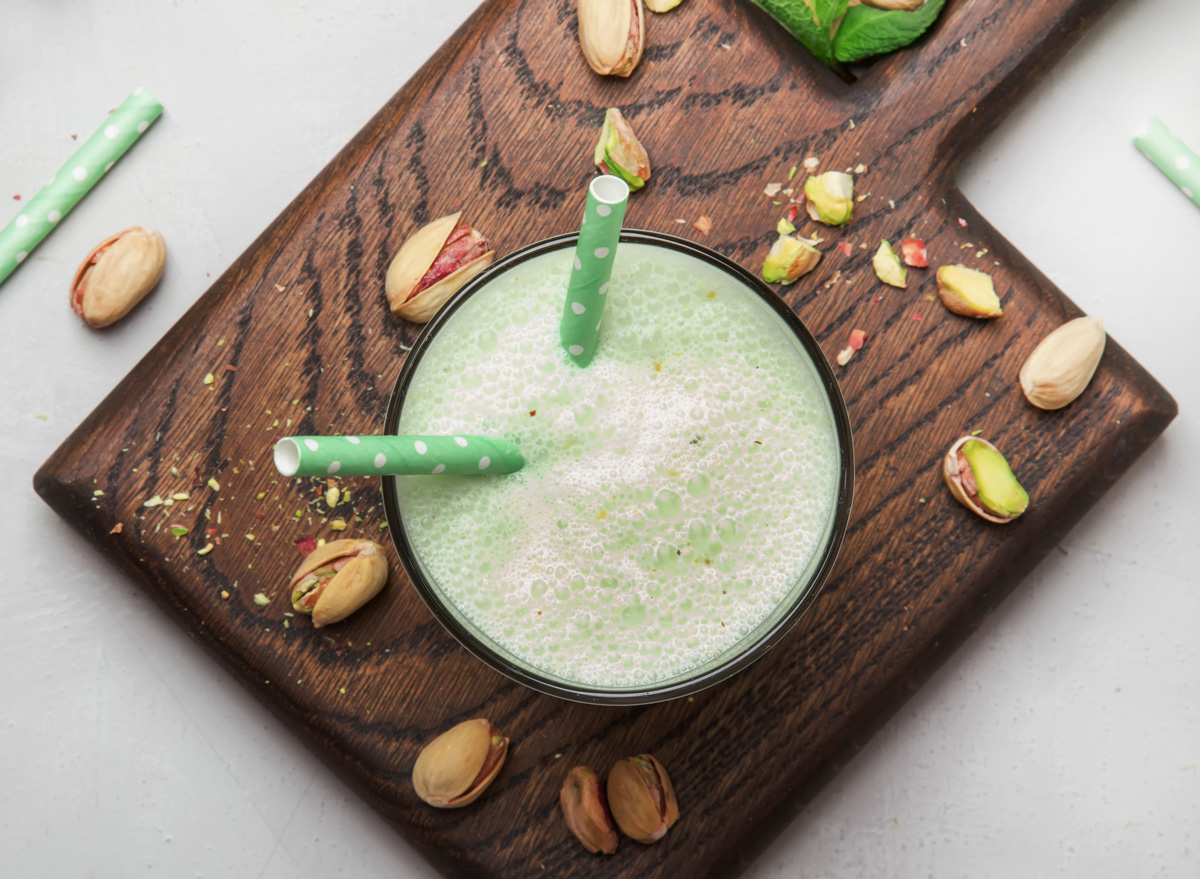
Bottled fruit smoothies seem healthful, but if you do a little nutrition facts investigation, you’ll see that they are almost as calorie, carb, and sugar-heavy as a milkshake. Instead, opt for making your own smoothies with protein powder.
Soda
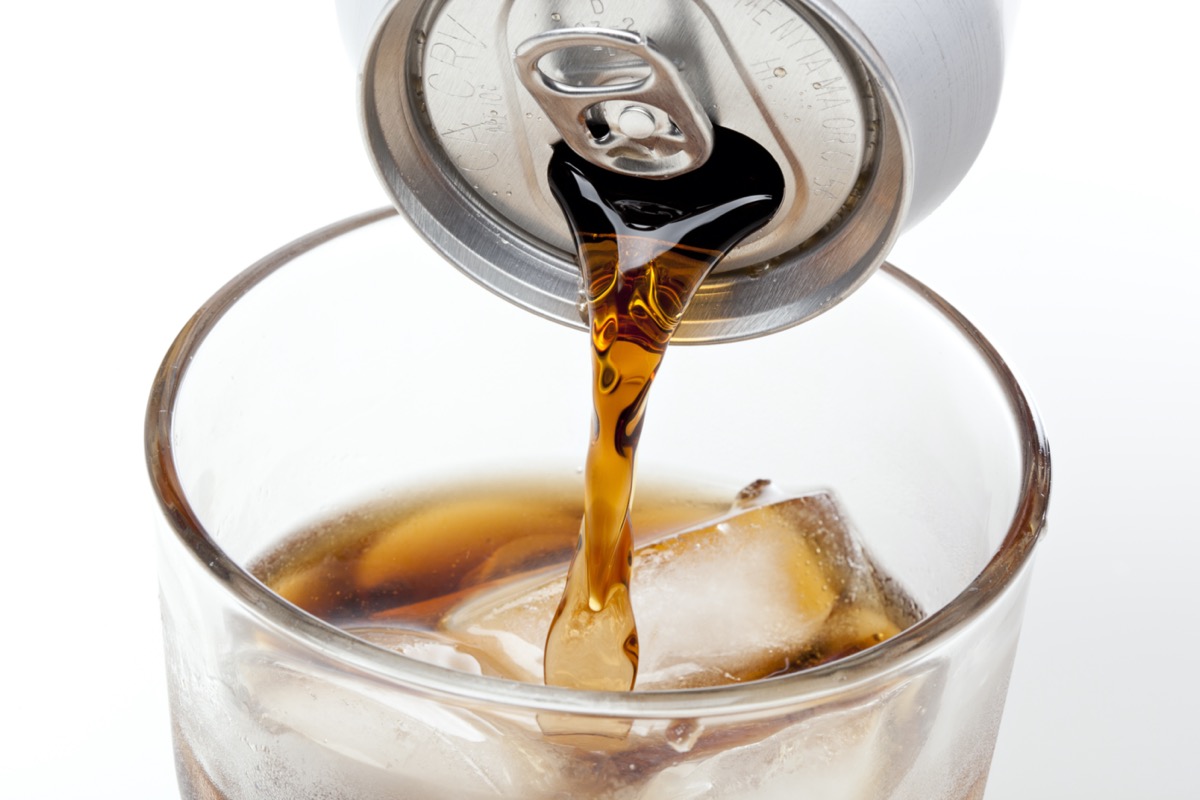
You already knew 12 ounces of soda was filled with chemicals and about 10 teaspoons of sugar, but did you realize that it packs more carbohydrates than an entire bowl of pasta? It’s true. A 12-ounce can of Sprite has 38 grams of carbs, while a classic cola has about 39 grams. And that’s not all! Check out these 105 Most Popular Sodas Ranked by How Toxic They Are.
Whole-Wheat Pancakes
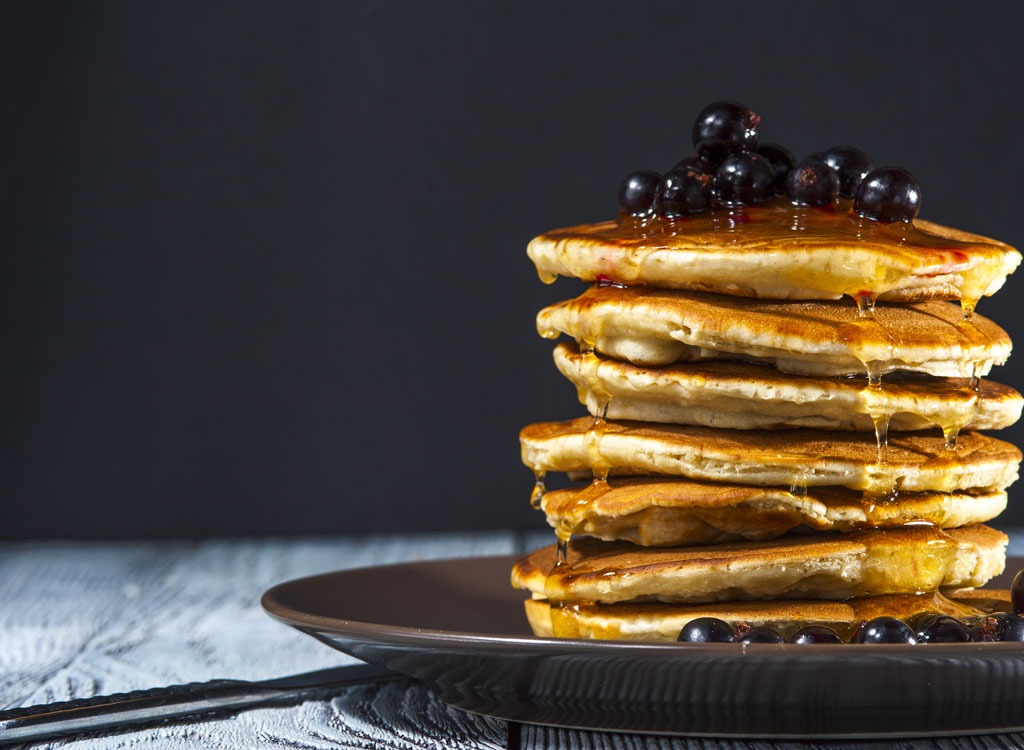
When it comes to eating a stack of pancakes, you might know you’re getting ready to carb overload, but sugar doesn’t always register. After all, if you skip the butter and fruit compote, you should be fine, right? Not always. A stack of four Harvest Grain ‘N Nut Pancakes from IHOP might sound healthier than buttermilk, but they actually contain 20 grams of sugar. Add on some light maple syrup, and you’re looking at 30-plus grams in your morning meal.